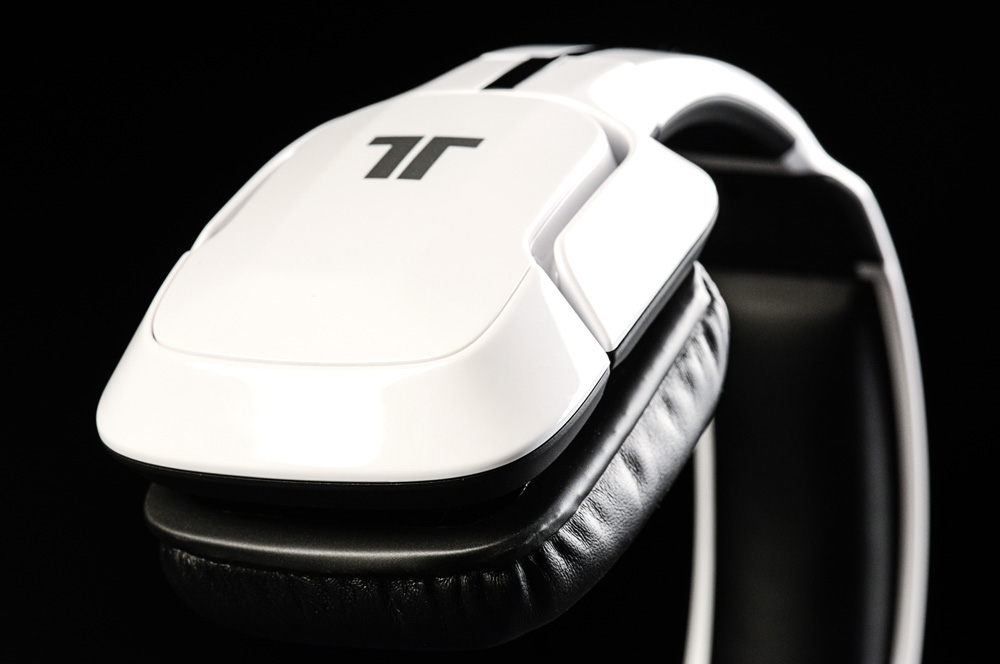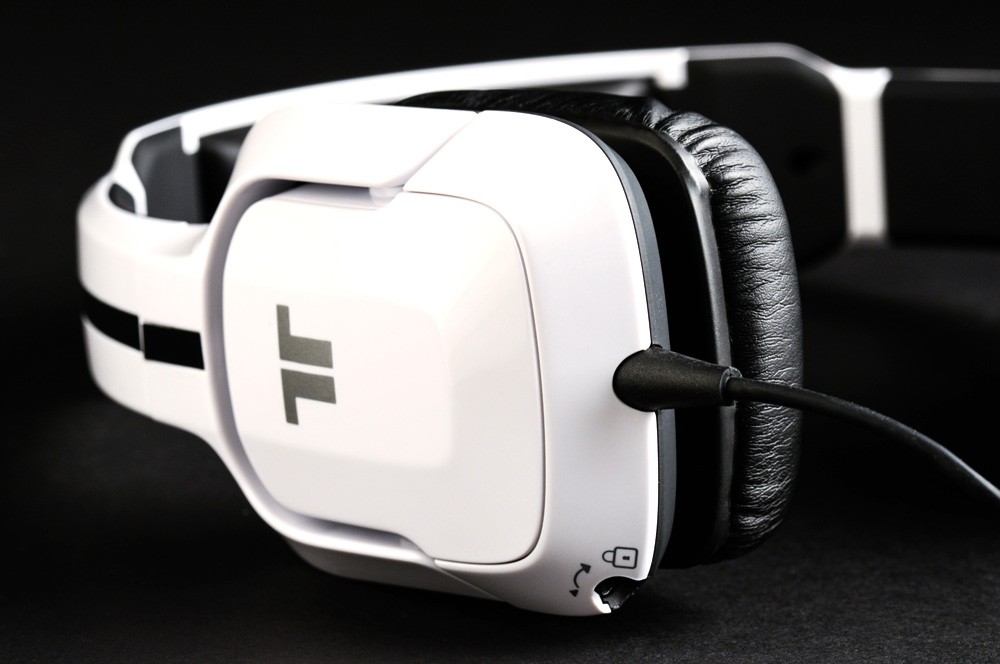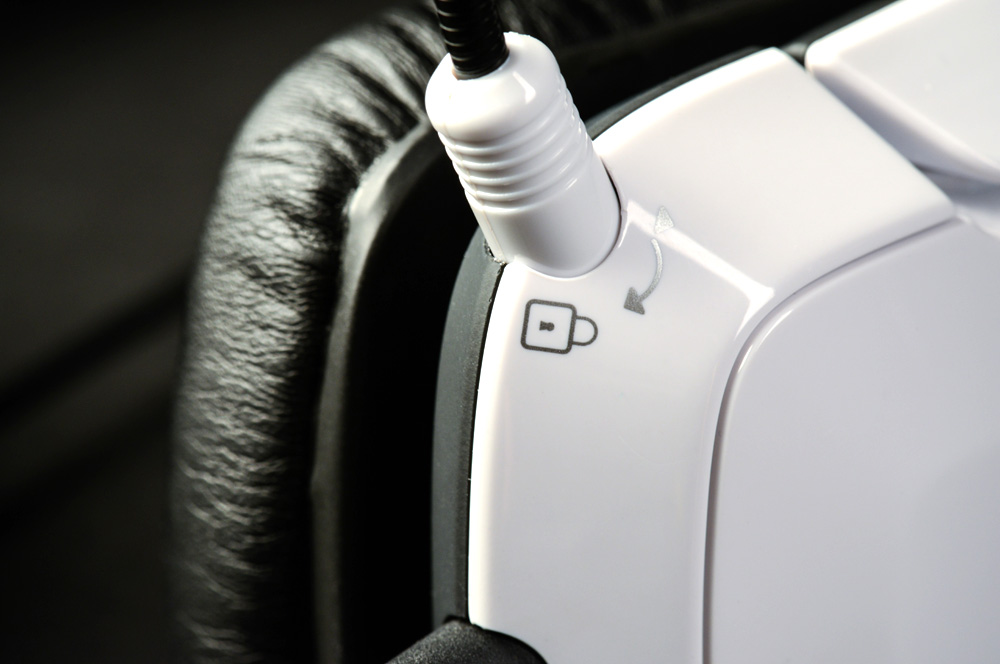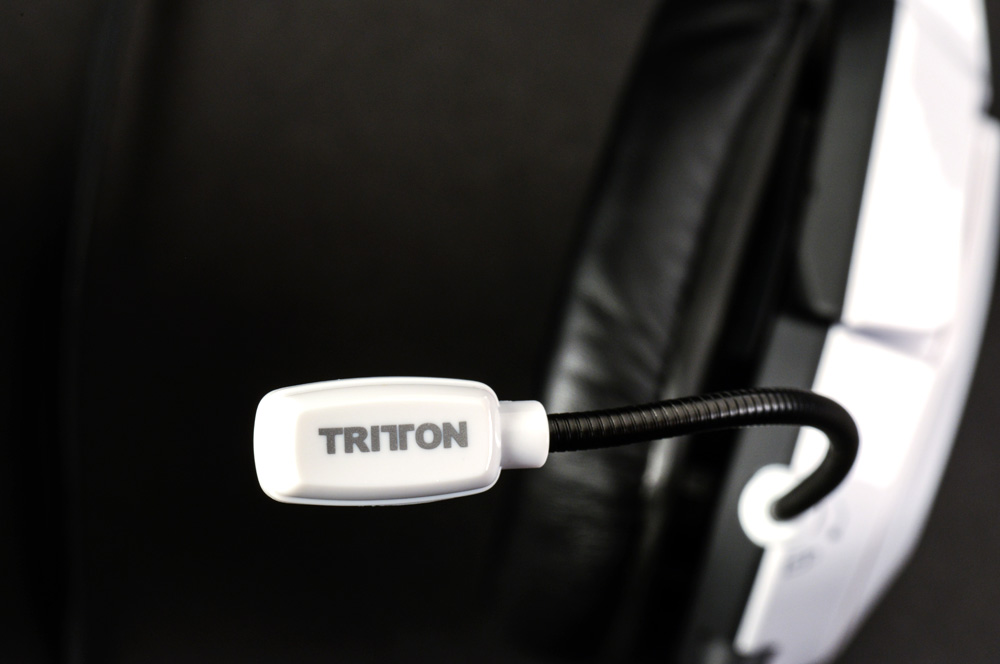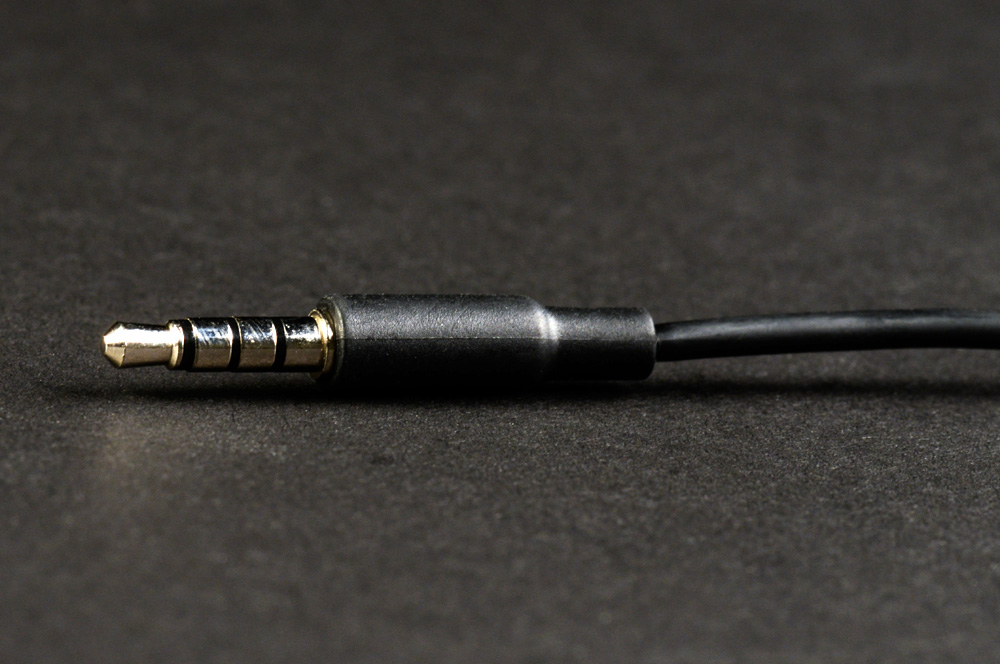“While the Kunai may not win any awards, we found ourselves impressed with this little headset. Style, versatility, and a sound that well exceeds the price point all add up to a winning combination, in our book.”
- Excellent balance
- Clear tone and timbre
- Ergonomic design
- Music and gaming compliant
- Extremely affordable
- Ground hum when amplified
- Lack of depth
- Analog connection requires purchase of analog PS3 cable
No matter how many players creep into the market, it seems there’s always room for one more gaming headset. Whether you’re looking to drop some serious coin on the latest wireless surround sound model, or keep it simple with a decent set of budget cans, there’s a gaming headset out there with your name on it.
The new Tritton Kunai stereo headset from Madcatz represents the latter option. The Kunai is Madcatz’s entry level wired headset – it’s low on frills and marketed as console-specific to the PS3. But the Kunai also follows the increasingly popular trend of a headphone that’s just as comfortable with being plugged into an MP3 player as it is a gaming console. A simple one-step connection allows you to quickly transition from a multiplayer battle in your TV room to a hip-hop track on the bus downtown with almost zero exposure to that pesky exterior world.

But price and versatility aside, the ultimate worth of any headset rests with its sound quality. To that end, the Kunai had us wondering: How deep into the bargain basement can you go and still come out with a headset worth putting on in the first place? After some extensive testing, we think we have the answer.
Out of the box
Removing the Kunai from its layered fortress of cardboard was a bit of a chore. After fumbling with the securely taped outer shell, we were finally able to open the main box. We found a rectangular tray with a removable chat microphone and a quick start guide. Beneath the tray, we discovered the polished headset. Also in the box was a bundle of extension cables to connect the Kunai to a Playstation 3 (PS3).
Features and design
Maybe it’s our upbringing, but after a glance at the Kunai’s gloss-plastic exterior (available in black, white, or red) we couldn’t help but be reminded of the armored bad guys that inhabit the original Star Wars universe. There’s a matching headset for Vader, the Storm Troopers, and even one for those weird red guys with the long robes. Our test model was the Storm Trooper-White version.
A black racing stripe runs the length of the Kunai’s gleaming white exterior, framing a silver Tritton logo at the top. The underside of the headband is all black, with a soft vinyl pad at the center. The on-ear rectangular ear cups have removable exterior plates sporting a silver-colored ‘T’ in the center. The plates connect to the ear cups via a pair of magnets, and we assume you’ll be able to swap the plates for custom designs, but we saw no mention of replacements at the Tritton website.
The ear cups swivel inward to fit to the head and rotate 90 degrees horizontally on the extendable headband to lay flat in a comfortable resting position. The black pads lining the interior of the ear pads are covered in soft leatherette and surround the Kunai’s 40mm neodymium drivers. The removable chat mic easily locks into place on the left ear cup with a quick turn.
While running the Kunai through their paces…we were hard pressed to find a major fault.
To enable PS3 audio, the standard cable connects to an in-line audio control piece which provides separate faders for game and chat volume. Extending from the in-line controller is a 14-foot cable that has stereo-RCA piggyback connectors for your TV, receiver, or direct connection to your PS3’s analog audio cable (assuming you have one.) A separate USB connection plugs directly into the PS3 to provide power to the headphones’ buit-in amp and pass through game-chat audio. Note that PS3 audio settings must be adjusted to get the headset amplification to function, ensuring you won’t be using the Kunai with other consoles or PCs.
Comfort
The thick pads around the ear cups and at the on the center of the Kunai’s headband provide ample support, allowing extended periods of gaming or music listening in relative comfort. The ear cups press gently against the head, but with just enough clamping force for a secure, ergonomic fit.
Music
When possible, we avoid determining the price of a headset until we’ve had a serious listen. After about 8 songs, we pegged the Kunai’s sound at a net worth of around $100. Imagine our surprise, then, to find this little gem online for under $40!

While running the Kunai through their paces with a variety of musical genres, we were hard pressed to find a major fault. In fact, though they didn’t deliver precision or depth on par with top-end hi-fi headsets, the Kunai astonished us with their versatile handling of instrumentation and vocals, bringing an airy presence to the midrange and treble, and a warm foundation to the bass.
The broad boom of the shots flying over our character’s head inspired an inkling of virtual fear that made the experience just that much more realistic.
That said, we did encounter a few issues that showed the Kunai’s limitations. At times we felt the headset lacked dimension. This was especially evident when closely listening to percussion, where the lack of expression resulted in a flat soundscape. We also could’ve handled a bit more detail and precision overall. But really, that was about all we could muster for musical complaints.
Gaming
The first thing we noticed after connecting the Kunai’s rudimentary analog connectors and USB-powered amplifier was a hum in the right driver. Though it was much less noticeable once gaming action began, the hum remained a distraction that killed a bit of our enthusiasm. After all, a gaming headset should not generate sonic problems while gaming.
Aside from that rather significant issue, the Kunai’s musical accuracy translated well to gaming performance. After loading up Medal of Honor, we found ourselves sufficiently submerged in a hail of well rounded machine gun fire, deep explosions, and the echoing footfall of enemy combatants fleeing down stone corridors.
We were especially impressed when we encountered our first .50 caliber machine gun. The broad boom of the shots flying over our character’s head inspired an inkling of virtual fear that made the experience just that much more realistic. And while the Kunai never conveyed the tactile detail or vivid immersion that we experienced with, say, the Astro A50, there were some great sonic moments between the lines, like boards creaking as we kicked in doors, or the clattering of concrete chips against a stone floor after a nearby explosion.
Conclusion
While the Kunai may not win any awards, we found ourselves impressed with this little headset. Style, versatility, and a sound that well exceeds the price point all add up to a winning combination, in our book. We had to knock the score down a few points due to the ground hum we experienced while connected to the PS3. But even if the Kunai were only used for music listening, at $40, they’d still be a bargain. If you’re a competitive gamer looking for the best audio experience possible, the Kunai isn’t for you. But if you’re looking for something affordable to get you deeper into gaming action – and maybe an iPod headset you don’t mind taking on the road – it’s hard to beat the Tritton Kunai.
Highs
- Excellent balance
- Clear tone and timbre
- Ergonomic design
- Music and gaming compliant
- Extremely affordable
Lows
- Ground hum when amplified
- Lack of depth
- Analog connection requires purchase of analog PS3 cable

